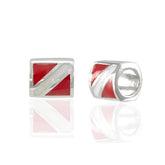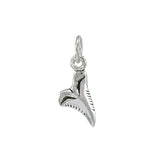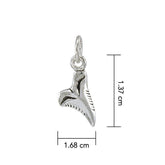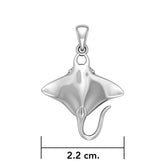Silver Exchange Program Overview
Summary
Introduction and Market Context
The video begins by addressing the fluctuating market price of silver, highlighting that silver prices have recently increased significantly after a period of decline, with the current rise being around twenty percent. The presenter emphasizes the opportunity this creates for individuals and businesses holding silver jewelry that is not actively selling or moving in inventory. The context sets the stage for why reconsidering old or stagnant silver jewelry can be financially beneficial.
Problem Identification: Stagnant Silver Jewelry Inventory
A key issue discussed is the challenge many retailers and individuals face with silver jewelry that remains unsold over extended periods—sometimes six to eight months or more. This problem is portrayed as a loss of potential revenue and value, as these unsold items are essentially tying up money that could otherwise be reinvested into more desirable inventory. The presenter stresses the importance of actively managing inventory and not letting old or tarnished silver pieces become a financial drain.
Solution Offered: The Silver Exchange Program
The core solution offered in the video is the Silver Exchange Program, designed to help jewelry holders convert their unsold silver items into credit toward new merchandise. The program encourages customers to assess their old silver jewelry, particularly pieces marked as sterling silver, and consider trading them in rather than attempting to sell them at a loss or holding onto them indefinitely.
Tools for Decision Making: Downloadable PDF Form
To facilitate decision-making, the presenter offers a downloadable PDF form that outlines the financial benefits of participating in the exchange program. This document helps users calculate how much money they are currently losing by holding onto unsold inventory and illustrates potential savings through the program. The form is particularly useful for numbers-oriented individuals, but if someone isn’t comfortable with financial calculations, the recommendation is to seek help from someone who is.
Program Mechanism: How the Exchange Works
The program works by weighing the old silver jewelry and paying participants $222 per pound of the net weight calculated (i.e., the weight of sterling silver after deducting any non-silver components). The presenter uses practical examples: if someone has three to four pounds of silver jewelry, they could receive approximately $666 to $888 in credit. This amount is not given as cash but as store credit to be used toward new jewelry purchases.
Incentive Structure: Purchasing New Jewelry at Wholesale Prices
An essential detail is the purchasing requirements that follow the credit issuance. For example, if the program calculates a $500 credit for returned jewelry, the participant can use this as a discount on a $1,500 wholesale jewelry purchase. This means they will pay only $1,000 out of pocket, effectively receiving $500 worth of new jewelry “free.” The program encourages refreshing inventory by replacing older, less desirable stock with new, attractive pieces that are more likely to sell.
Benefits Highlighted: Inventory Refresh and Increased Sales Potential
The presenter highlights several tangible benefits of using the Silver Exchange Program:
- Clearing out old, tarnished, or unsellable jewelry to free up inventory space and capital.
- Gaining new, shiny, and marketable jewelry that fits the current season and customer preferences (notably referenced as beneficial for the 2017 sales season).
- Avoiding the labor-intensive process of constantly polishing older pieces, which can be physically exhausting and time-consuming.
- Jump-starting sales performance by offering fresh and appealing selections, thus potentially increasing revenue.
Call to Action and Support
The video concludes with a call to action, inviting viewers to pack their old sterling silver jewelry into a box and contact the program representatives to begin the exchange process. The presenter assures potential participants that knowledgeable support is available to explain the numbers and assist throughout the process. The final encouragement is to stop struggling with slow sales, optimize inventory turnover, and enjoy the financial gains from the program.
In-Depth Section Summaries
1. Market Trends and Silver Price Movement
The foundation of the discussion is the recent volatility in silver prices. After a downturn, silver’s price surged by about twenty percent, creating a timely opportunity for those holding silver to capitalize on this increase. This section implicitly appeals to the urgency of acting while prices remain favorable. The market fluctuation has made holding onto non-liquid silver jewelry an inefficient use of capital.
2. Inventory Challenges and Financial Losses
This section delves into the difficulties retailers face with unsold silver goods. Jewelry sitting idle on shelves or in storage incurs indirect losses — lost opportunity cost, storage overhead, and depreciation due to tarnishing or style obsolescence. The presenter points out that many jewelry items do not sell over busy periods and may remain stagnant for months, which is a critical inefficiency that drains business finances.
3. Identifying Silver Jewelry Eligible for Exchange
Only sterling silver items are eligible for this exchange. The emphasis is placed on examining all inventory pieces to determine what qualifies for the program. This step includes understanding product markings (“sterling silver inside”) and preparing the jewelry for evaluation by cleaning and weighing it. Clarifying these criteria helps participants maximize their returns.
4. Financial Calculation and Program Transparency
The PDF form made available is a practical tool to quantify losses and potential gains. It educates participants on how to weigh genuine benefits versus holding onto non-performing assets. By providing transparent calculations at $222 per pound, the program presents itself as fair and financially sound, aiming to build trust with participants.
5. Credit-Based Trade-In System
Rather than offering cash, the program provides store credit for returned jewelry. The rationale behind this approach is to encourage reinvestment in new inventory rather than cashing out and stopping business activity. This mechanism creates a recycling loop that benefits both the customer and the supplier, supporting ongoing commerce within the jewelry market.
6. Wholesale Pricing Advantage and New Inventory Acquisition
Receiving a $500 credit on a $1,500 purchase means customers save one-third on new purchases. This wholesale pricing benefit is an attractive incentive for retailers to refresh their inventory with contemporary designs, ultimately enhancing their sales appeal. It also introduces a strategic purchasing advantage by leveraging old inventory into higher-value, newer products.
7. Operational and Practical Benefits
Clearing out tarnished and unsellable inventory reduces workload related to maintenance, such as frequent polishing. It also revitalizes the store’s inventory mix with trendy, appealing pieces that are more likely to convert to sales. The program promises both time savings and increased revenue potential, closing the gap between inventory optimization and profitability.
8. Encouragement and Support Services
The closing segment reassures viewers that help is available to navigate the program details, including understanding the numbers if participants are not confident in financial analysis. It bolsters confidence in the program’s benefits and invites immediate action by stressing the ease of participation and potential for sales growth in the upcoming season.
Frequently Asked Questions (FAQ)
Q1: What types of jewelry qualify for the Silver Exchange Program?
A1: Only genuine sterling silver jewelry that is marked as such qualifies for the exchange.
Q2: How is the credit calculated for the jewelry I send in?
A2: Credit is calculated at $222 per pound of the net weight of qualifying silver jewelry.
Q3: Do I receive cash for my returned silver jewelry?
A3: No, the program offers store credit to be used toward purchasing new jewelry at wholesale prices.
Q4: Can I use the credit to buy any new jewelry?
A4: Yes, the credit applies toward new merchandise purchases, with a requirement to buy at least $1,500 worth of jewelry to utilize a $500 credit, for example.
Q5: What if I don’t understand the financial calculations in the PDF?
A5: The program encourages you to get help from someone comfortable with numbers or contact the program representatives for assistance.






